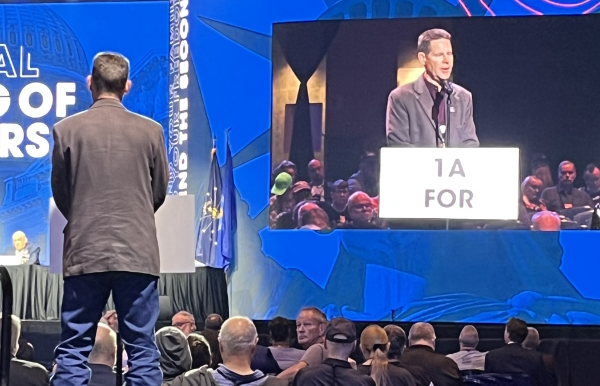Reflections on the 1984 NRA Annual Meeting: A Journey Through Internal Politics
Background: A Historic Gathering
The National Rifle Association (NRA) held its Annual Meeting in Milwaukee, Wisconsin, in 1984, marking a pivotal moment in the organization’s history. This event, which I attended as a graduate student, would later reveal the complexities of internal politics within the NRA.
Having recently completed my master’s degree in mining engineering at the University of Wisconsin, I was eager to participate. Along with my brother and a friend, Jim Blair, I prepared to witness the evolving dynamics within the NRA.
The Unfolding Drama: Neal Knox’s Reinstatement Efforts
Neal Knox, a former head of the Institute for Legislative Action (ILA), had been removed from his position in 1982 due to his assertive advocacy of Second Amendment rights. Knox had played a crucial role in a reform movement that began in 1977, advocating for changes that would empower members and improve representation within the NRA. His dismissal was reportedly influenced by Senate Majority Leader Bob Dole.
As the 1984 meeting approached, Knox and his supporters organized a plan to pass resolutions aimed at reinstating him to the Board of Directors and condemning his ousting from the ILA. This grassroots effort was palpable among members who felt strongly about Knox’s contributions.
Meeting Maneuvers and Betrayal
During the meeting, it became evident that the atmosphere was shifting in favor of Knox. However, the chairperson intervened with a strategic ploy, proposing a motion to suspend the rules to expedite awards presentations before opening further discussions. This maneuver caught many attendees off guard, leading to a heated debate.
Many activists, including my group, temporarily left to grab food, anticipating a lengthy session. As I enjoyed a meal at a nearby McDonald’s, I realized that under the suspension of rules, the meeting could conceivably conclude without addressing the critical resolutions we had come to support.
A Shocking Conclusion
Upon returning to the convention hall, we were startled to find members exiting the venue. The meeting had been adjourned, following a swift voice vote that disregarded prior assurances. This abrupt conclusion felt like a breach of trust and underscored the intricate and often cynical nature of NRA politics.
In a fleeting conversation with Jeff Knox, Neal’s son, I sensed the implications of these events, though our acquaintance would not be remembered by him over the decades that followed.
The official narrative published in the American Rifleman omitted any mention of the contentious incidents, focusing instead on less controversial aspects of the meeting.
Legacy and Reform
Neal Knox would later initiate his Hard Corps Report a month after the meeting, advocating for continued reform within the NRA until his death in 2005. His son, Jeff, has continued this legacy, focusing on transparency and member engagement.
Reflecting on these events today raises questions about the future trajectory of the NRA, particularly considering ongoing challenges and reform movements. The machinations of internal politics, even decades later, continue to shape the organization’s direction.

